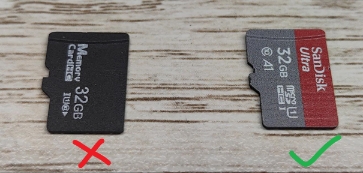LILYGO T-Embed CC1101 Module Bruce Launcher CapibaraZero
Product Link

Video about T-Embed-CC1101:
Product
MCU
ESP32-S3-WROOM-1
Flash / PSRAM
16M / 8M
Sub-G
CC1101
NFC
PN532 (0x24)
Display IC
ST7789 (320x170)
Battery Capacity
3.7V-1300mAh
Battery Chip
BQ25896 (0x6B), BQ27220 (0x55)
LED Driver
WS2812
Some interesting projects that support T-Embed-CC1101:
Module
Datasheets on the chip are available in ./hardware directory.
Wireless transceiver
T-Embed-CC1101 has a built-in Sub-GHz module based on a CC1101 transceiver and a radio antenna (the maximum range is 50 meters). Both the CC1101 chip and the antenna are designed to operate at frequencies in the 300-348 MHz, 387-464 MHz, and 779-928 MHz bands.
The Sub-GHz application supports external radio modules based on the CC1101 transceiver.
PN532
The PN532 only supports high-frequency cards at 13.56MHz, does not support low-frequency cards at 125K, does not support CPU cards, and does not support encryption cards.
"✅" represents a card of support.
Type
Encryption Method
Anti-Copy Capability
Attack Risk
Typical uses
Mifare Classic ✅
Weak (CRYPTO1 algorithm, cracked)
Low
Easily cloned (e.g., via Proxmark3 tools)
Access control cards, public transportation cards (old system)
NTAG ✅
No encryption (UID lockable)
Very Low
Data can be arbitrarily read
Smart labels, advertising interaction, and product anti-counterfeiting
Mifare Plus
AES-128 encryption
Medium-High
Requires physical access to crack
-
Felica
Dynamic encryption (SAM module)
High
Hard to crack (Japan-exclusive protocol)
Japanese transportation cards, electronic wallets
DESFire
AES/TDES encryption
Very High
Supports multi-app isolation, resists side-channel attacks
High-security access control, campus one-card, electronic passport
CPU Card
Hardware encryption (SM4/ECC/RSA)
Very High
Supports China's national cryptographic standards, financial-grade security
Bank card, ID card, social security card
Get Start
PlatformIO is recommended because these examples were developed on it.
PlatformIO
Install Visual Studio Code and Python, and clone or download the project;
Search for the
PlatformIOplugin in theVisualStudioCodeextension and install it;After the installation is complete, you need to restart
VisualStudioCodeAfter opening this project, PlatformIO will automatically download the required tripartite libraries and dependencies, the first time this process is relatively long, please wait patiently;
After all the dependencies are installed, you can open the
platformio.iniconfiguration file, uncomment inexampleto select a routine, and then pressctrl+sto save the.iniconfiguration file;Click ☑️ under VScode to compile the project, then plug in USB and select COM under VScode;
Finally, click the ➡️ button to download the program to Flash;
FAQ
Unable to detect sd card:
We were able to successfully test SD with SanDisk no larger than 32GB; But some other cards don't, and it's not clear why;
Therefore, when the SD card is not detected, it is recommended to change a SanDisk card not larger than 32G;
Other questions
Documents
For more information, see the ./hardware directory.
Schematic : T-Embed-CC1101
CC1101 Schematic : CC1101
CC1101 Pins : CC1101 Pins
3D Files : T-Embed CC1101.stp
Last updated
Was this helpful?

